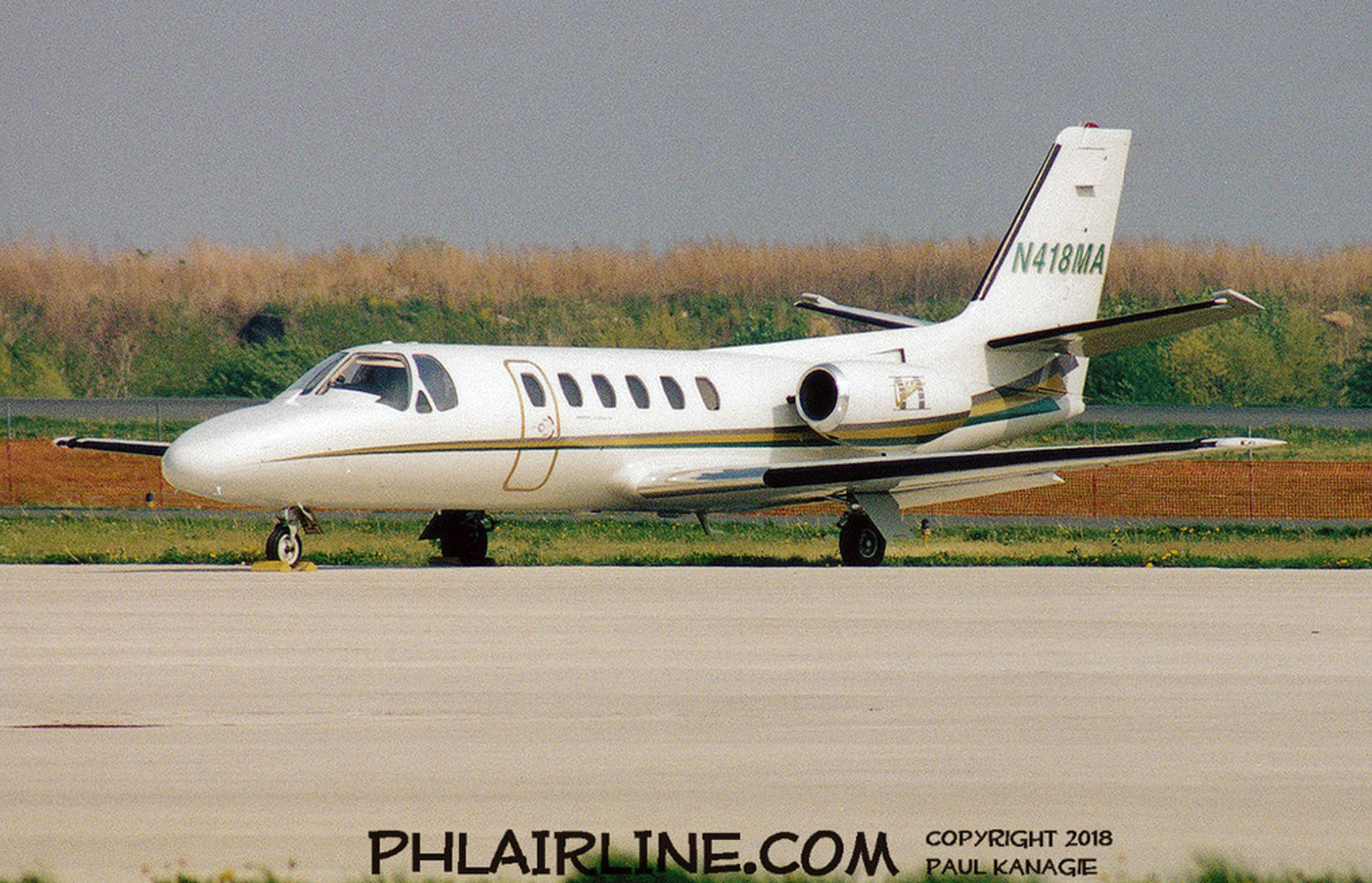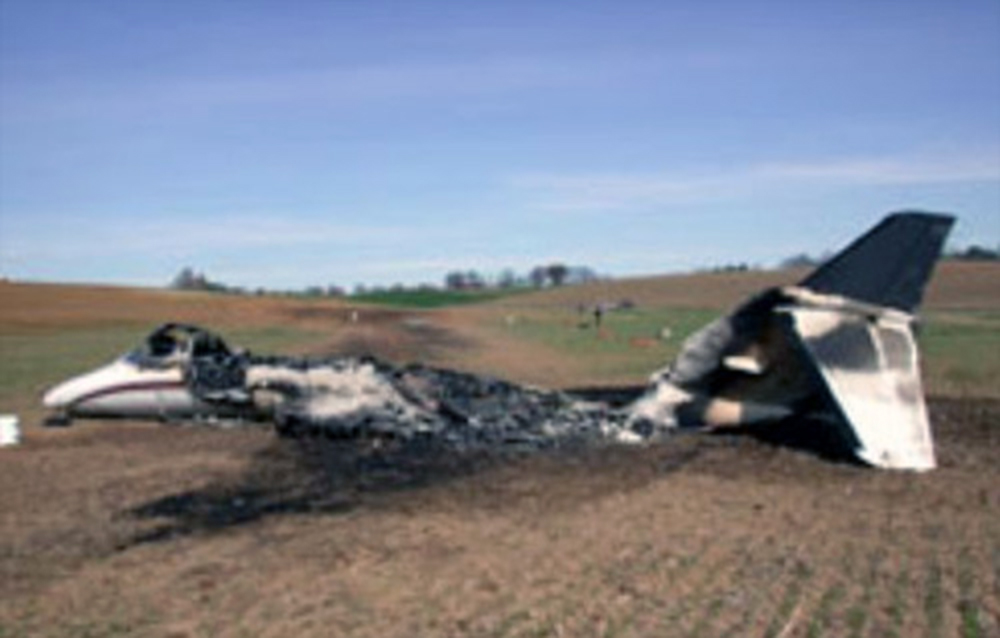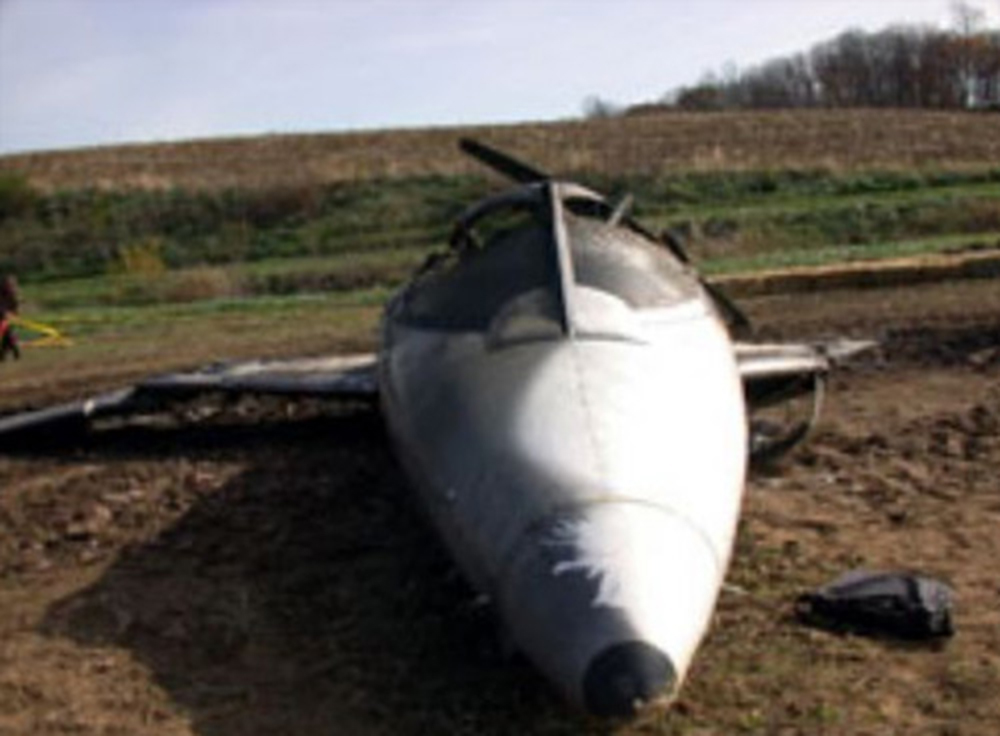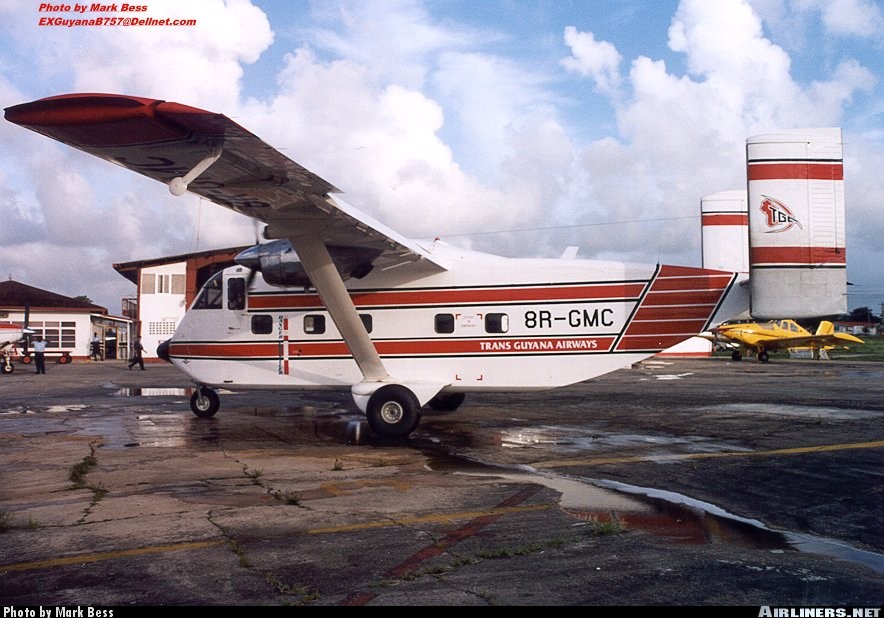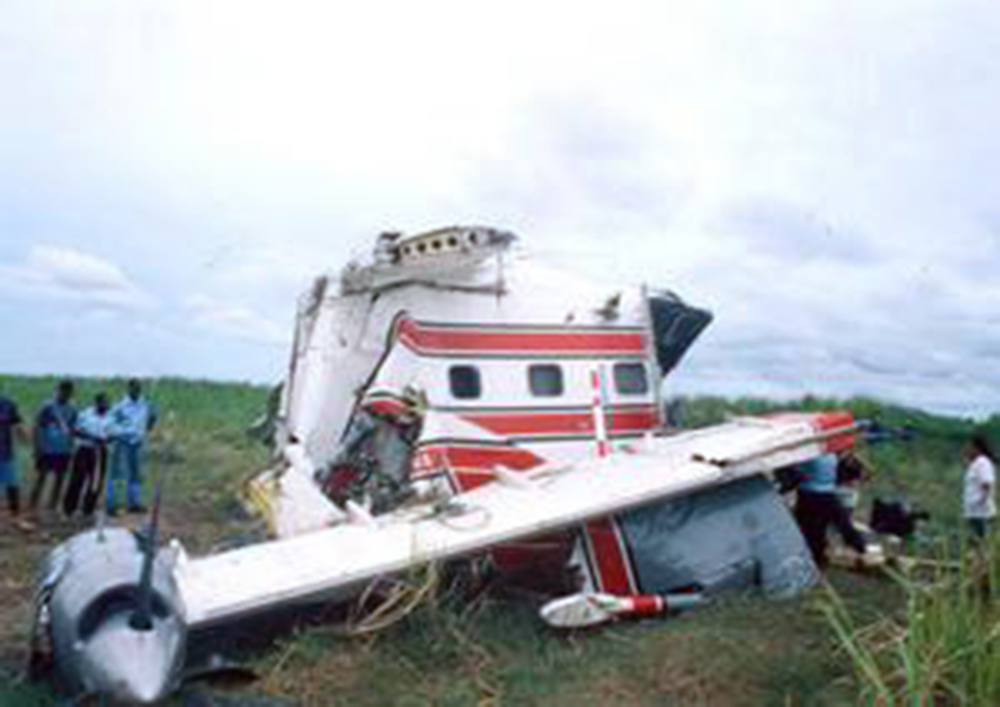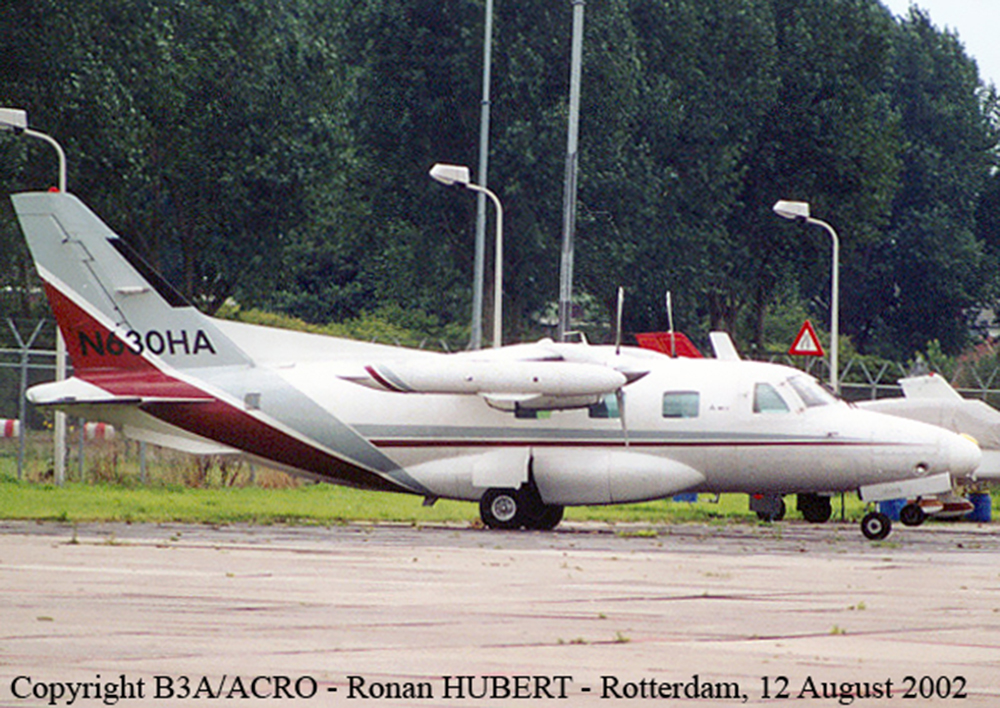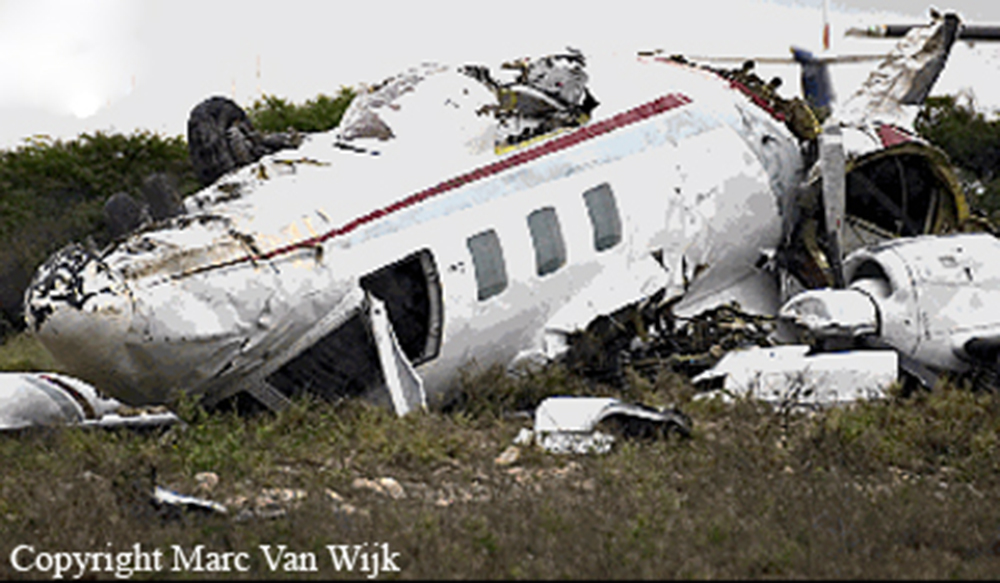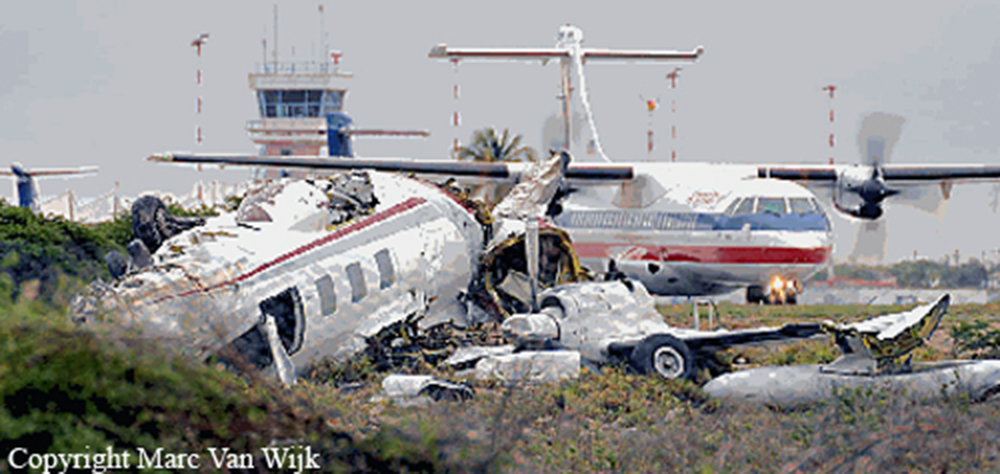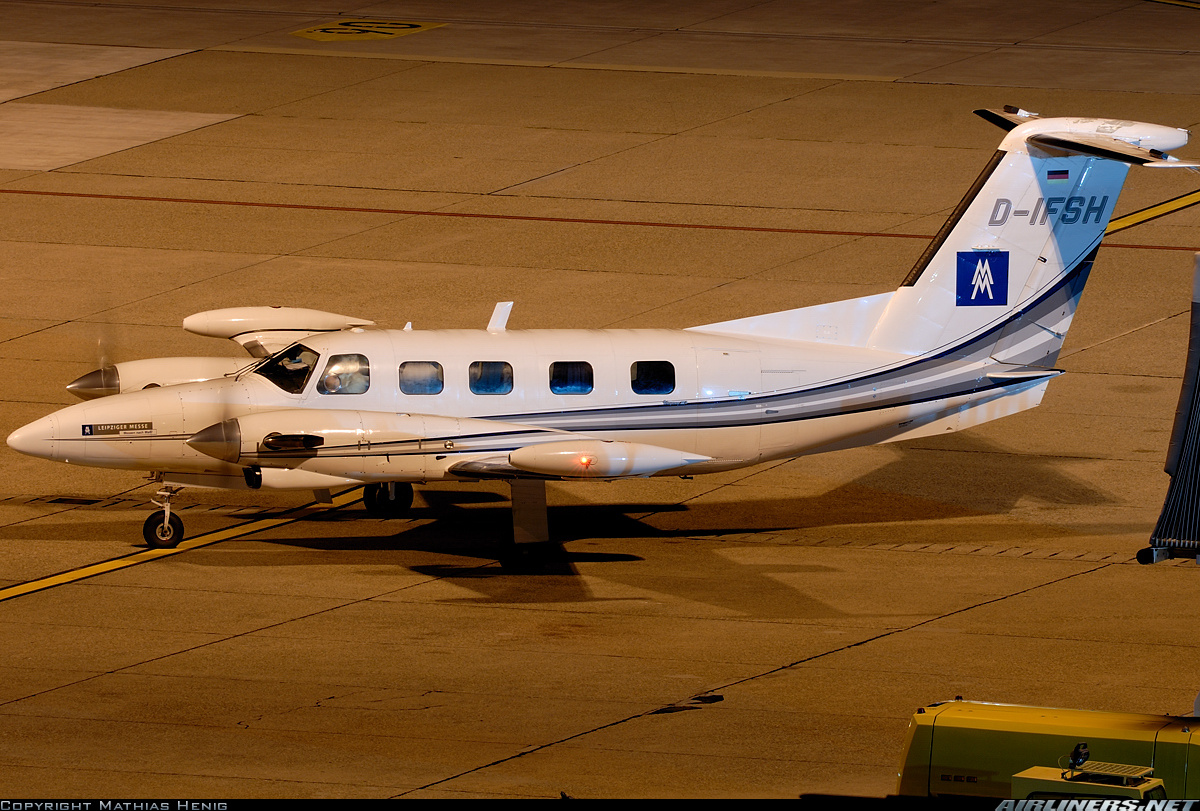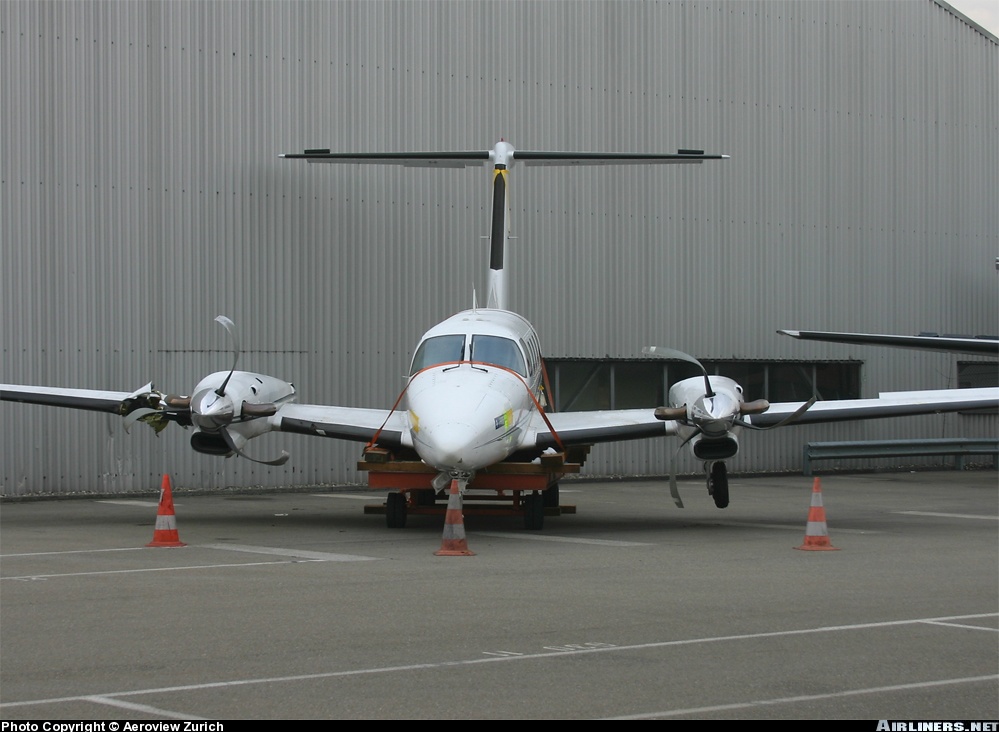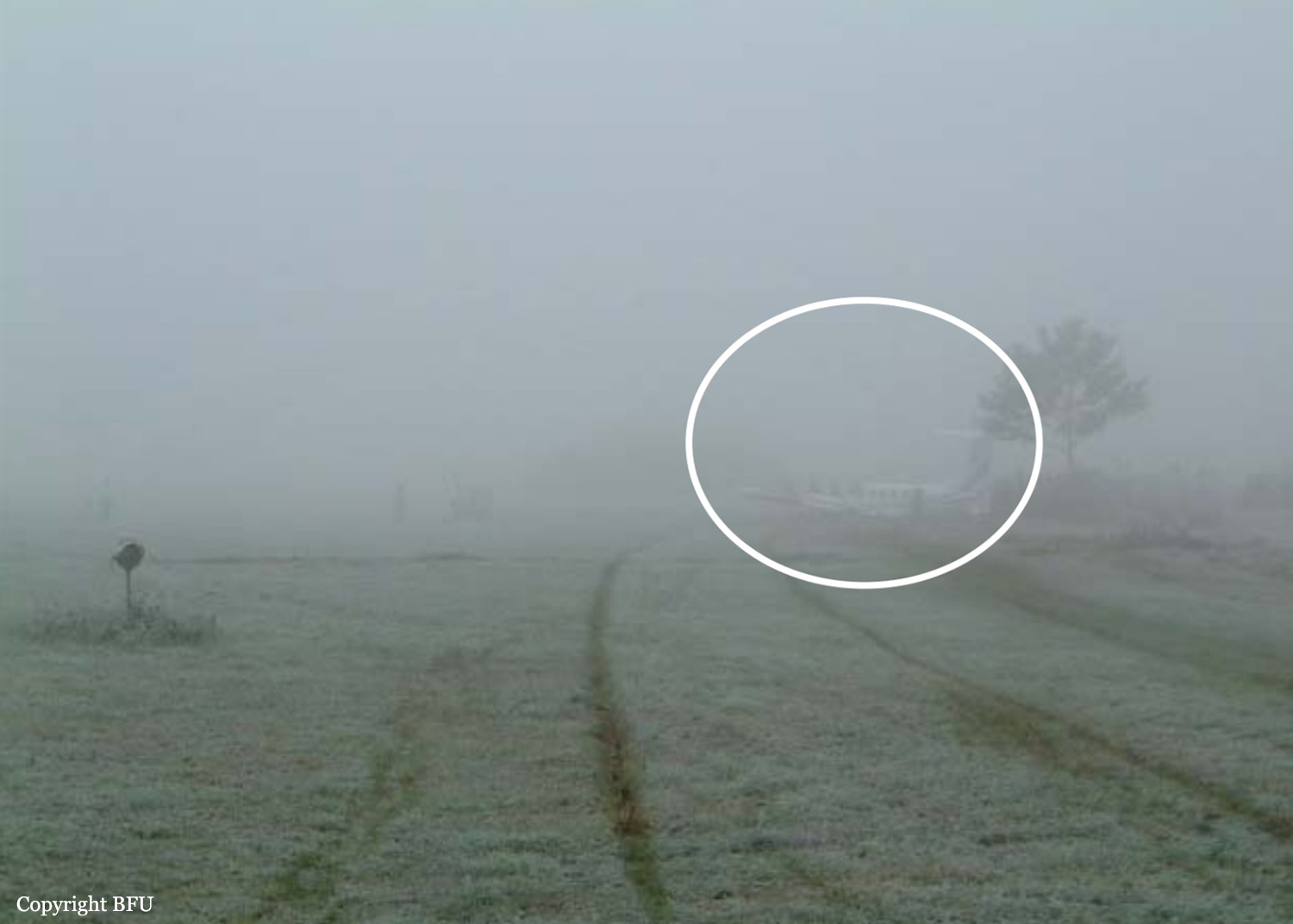Crash of a BAe 125-403B in Luanda
Date & Time:
Nov 21, 2003
Registration:
D2-EXR
Survivors:
Yes
Schedule:
Luanda – Catumbela
MSN:
25215
YOM:
1970
Crew on board:
2
Crew fatalities:
Pax on board:
0
Pax fatalities:
Other fatalities:
Total fatalities:
0
Circumstances:
Few minutes after takeoff from Lunda-4 de Fevereiro Airport, en route to Catumbela, the crew informed ATC about hydraulic problems and was cleared for an emergency return to Luanda. Due to the failure of the primary hydraulic system, the crew was unable to lower the landing gear and decided to complete a belly landing on the grassy area located between both runways 23 and 25. The aircraft slid on its belly for few dozen metres before coming to rest. Both pilots were uninjured but the aircraft was damaged beyond repair.

